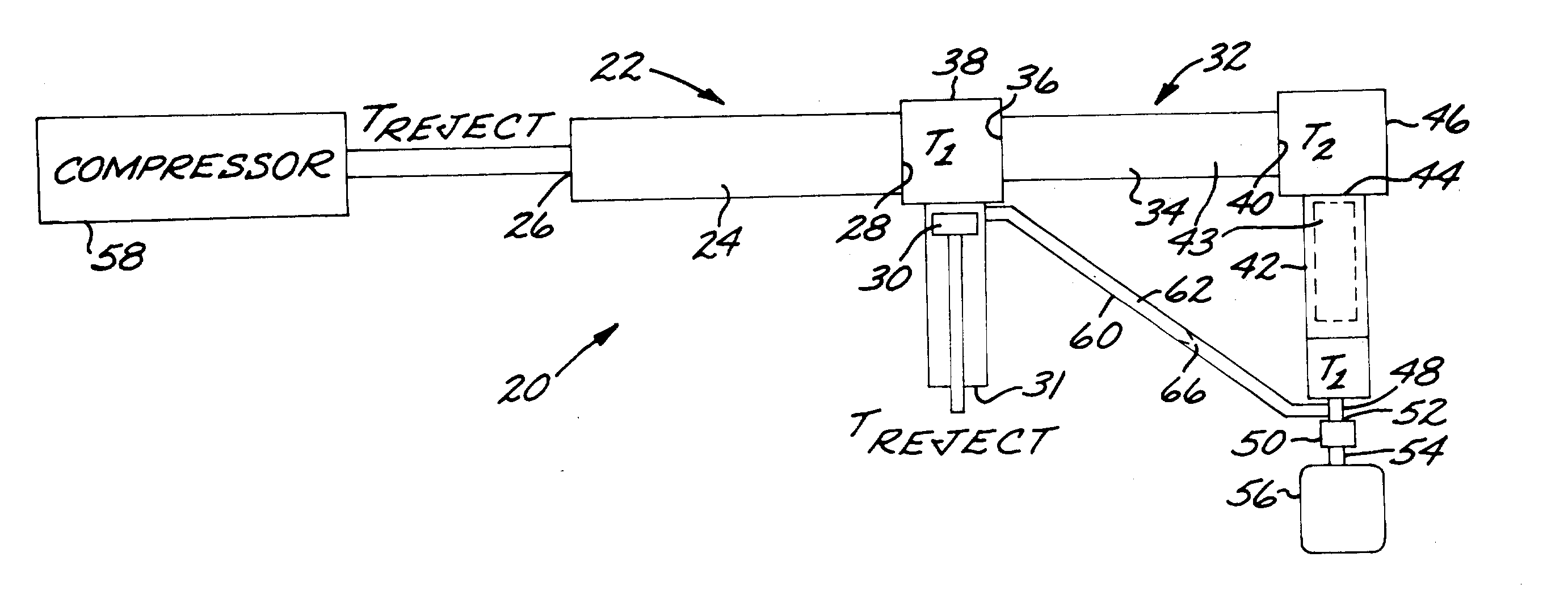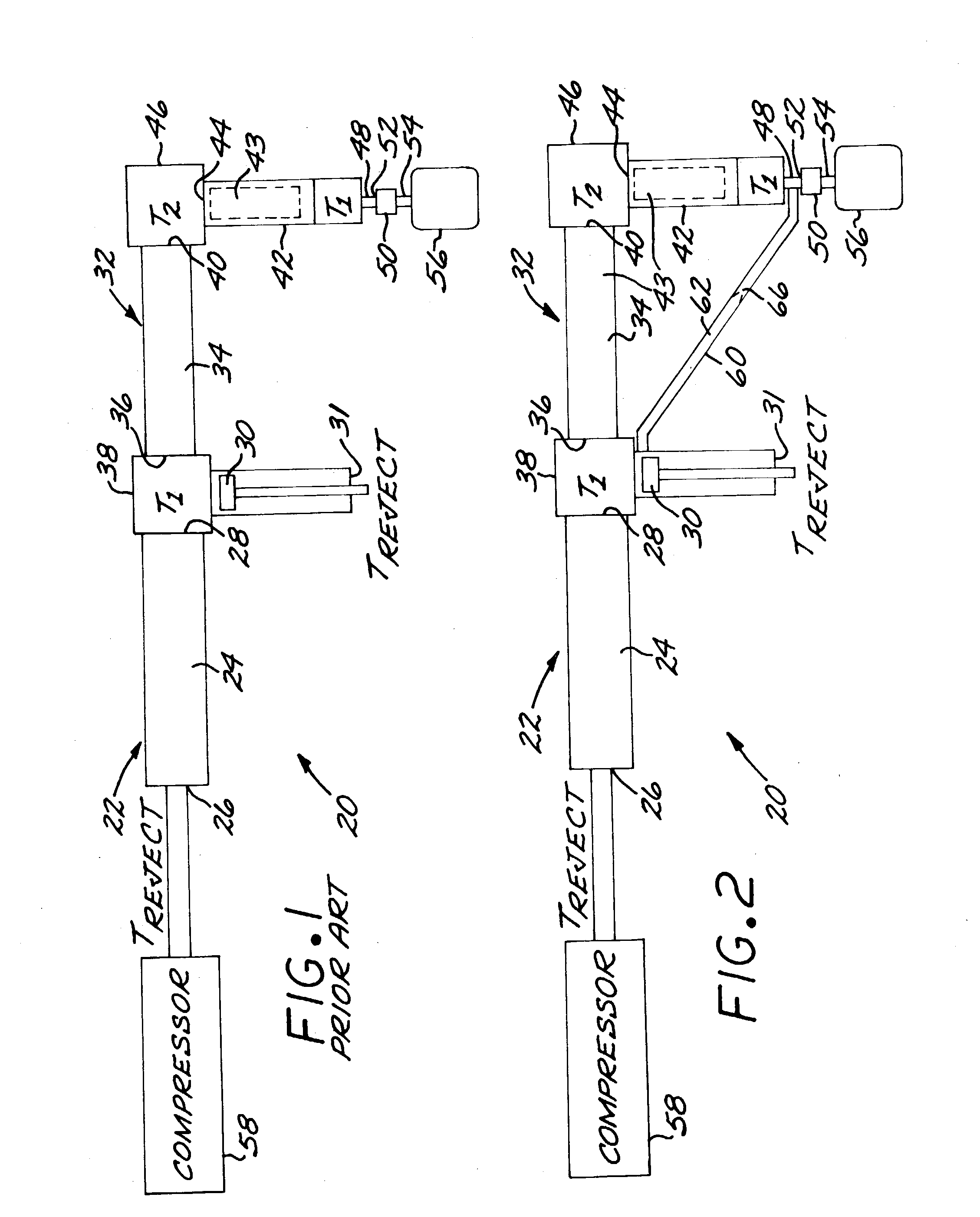Stirling/pulse tube hybrid cryocooler with gas flow shunt
a hybrid cryocooler and gas flow technology, which is applied in gas cycle refrigeration machines, compression machines with cascade operation, refrigeration machines, etc., can solve the problems of pulse tube losses consuming 25-40 percent of gross refrigeration capacity, limited use of liquefied gas, etc., to reduce gas mass flow rate, reduce pressure drop and enthalpy flow losses, and increase the pressure ratio of maximum-to-minimum cycle pressur
- Summary
- Abstract
- Description
- Claims
- Application Information
AI Technical Summary
Benefits of technology
Problems solved by technology
Method used
Image
Examples
Embodiment Construction
[0019] The physical structure of the two-stage Stirling / pulse tube cryocooler is described in detail in U.S. Pat. Nos. 6,167,707 and 6,330,800, whose disclosures are incorporated by reference. The preferred working gas for the two-stage Stirling / pulse tube cryocooler is helium. The schematic representations of the present FIGS. 1 and 2-3 illustrate this physical structure in a manner that is most conducive to understanding, respectively, the conventional approach and two embodiments of the present approach, in relation to the improvements of the present approach.
[0020] As seen in each of FIGS. 1-3, a two-stage hybrid cryocooler 20 comprises a first-stage Stirling expander 22. The first-stage Stirling expander 22 includes a first-stage regenerator 24 having a first-stage-regenerator inlet 26 and a first-stage regenerator outlet 28, and a driven Stirling expander piston 30. The first-stage-regenerator inlet 26 and a warm end 31 of the Stirling expander piston 30 are typically operate...
PUM
 Login to View More
Login to View More Abstract
Description
Claims
Application Information
 Login to View More
Login to View More - R&D
- Intellectual Property
- Life Sciences
- Materials
- Tech Scout
- Unparalleled Data Quality
- Higher Quality Content
- 60% Fewer Hallucinations
Browse by: Latest US Patents, China's latest patents, Technical Efficacy Thesaurus, Application Domain, Technology Topic, Popular Technical Reports.
© 2025 PatSnap. All rights reserved.Legal|Privacy policy|Modern Slavery Act Transparency Statement|Sitemap|About US| Contact US: help@patsnap.com



